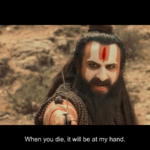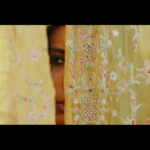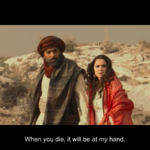It is difficult now to challenge the school as a system because we are
so used to it. Our industrial categories tend to define results as
products of specialized institutions and instruments, Armies produce
defence for countries. Churches procure salvation in an
afterlife. Binet defined intelligence as that which his tests
test. Why not, then, conceive of education as the product of schools?
Once this tag has been accepted, unschooled education gives the
impression of something spurious, illegitimate and certainly
unaccredited.
– Ivan Illich (Celebration of Awareness)
Author: The Mitr
Einstein on his school experience
One had to cram all this stuff into one’s mind, whether one liked it or not. This coercion had such a deterring effect that, after I had passed the final examination, I found the consideration of any scientific problems distasteful to me for an entire year … is in fact nothing short of a miracle that the modern methods of instruction have not yet entirely strangled the holy curiosity of inquiry; for this delicate little plant, aside from stimulation, stands mainly in need of freedom; without this it goes to wreck and ruin without fail. It is a very grave mistake to think that the enjoyment of seeing and searching can be promoted by means of coercion and a sense of duty. To the contrary, I believe that it would be possible to rob even a healthy beast of prey of its voraciousness, if it were possible, with the aid of a whip, to force the beast to devour continuously, even when not hungry – especially if the food, handed out under such coercion, were to be selected accordingly.
Seeing that even almost a hundred years later it is almost unchanged gives one an idea of how little effort has gone into changing how we learn.
Positive and Negative thin spaces in LaTeX
At times in LaTeX you want to introduce a small space between words. This is especially important in mathematical typesetting. Just adding a little bit of space hairspace, can alter the aesthetic look of the equation or mathematical entity substantially. For example consider this expression:
$|a|^{2}$
This produces the following

The | braces are too close to the character “a”. To create a better version of this we introduce a small hairspace between the two. The code for hairspace is \,.
$|\,a\,|^{2}$
This produces a much nicer looking expression.

This feature of hairspace was known to me for some time. But the problem came when I had to create a negative space. Take for example this expression:
$F_{eff} = kx$
The result of this is not so nice looking as you can see:

But then I came to know about a negative hairspace. The code for it is \!. Now let us introduce this in the above expression
$F_{e\!f\!\!f} = kx$
The result is much better visually:

Sidenotes and label in LaTeX
Recently I have been using the sidenotes package in LaTeX. It provides many options which I find aesthetically pleasing. For example, instead of footnotes, it gives sidenotes. This particular typesetting has been used beautifully by Tufte in his books. But even before Tufte’s books this option has been used, for example, see the beautifully designed book The Evolution of Culture in Animals by John. T. Bonner.

Not the recent reprint, some idiots at Princeton University Press have completely killed the aesthetically pleasing landscaped typesetting to portrait one (and a not very good one)! In general Bonner’s book are a visual treat in terms of designing and of course the content as well. His meticulous detail to the images, and use of log-scales to depict biological scale in time and space it something that I have not seen very often.
The Evolution of Culture in Animals uses a landscape mode with sidenotes and figures in margins extensively. This is the exact functionality that the sidenotes package provides. Even the tufte-book and tufte-handout classes use this package in a modified manner.
When using sidenotes package, I found that the marginfigure and margintable environments worked without a problem when using a label and referring them to in the document. But when it came to the sidecaption option for wider figures and tables, somehow I could not get the referencing to work. The hyperref showed the correct page and even the captions had the correct numbers for tables and figures. But the label and \ref{} to it didn’t work.
For example, if a figure was created as such:
\begin{figure}
\includegraphics[width=0.8\textwidth]{eagle.jpg}
\sidecaption[][1cm]{This is an eagle.}
\label{eagle1}
\end{figure}
The first [] controls the text that appears in the List of Figures, while the second [] controls the vertical placement of the caption.
Now when I referred to this figure in the document using Figure~\ref{eagle1}, it gave an error and typeset it as Figure ??, instead of Figure 1.1 or something similar. The same problem was there for a sidecaption used for tables as well. A common mistake which usually causes this error is placing the label before the caption. So the golden rule seems to be:
Always place your
\label{}after the\caption{}.
But it was not the case in my example. A bit of digging in the log file showed this error:
Package caption Warning: \label without proper reference on input line xxx.
See the caption package documentation for explanation.
LaTeX Warning: Reference `eagle1′ on page 7 undefined on input line 415.
Now back to caption package documentation, it had this explanation for this error (page 44):
\labelwithout proper\caption
Regarding\labelthe floating environments behave differently than its non-floating counter-parts: The internal reference will not be generated at the beginning of the environment, but at\captioninstead. So you have to place the\labelcommand either just after or inside the caption text (mandatory argument of\caption).
So that was it. You have to place the \label{} inside the \caption{} environment and the issue was solved. Placing it just after the caption did not work for me.
\begin{figure}
\includegraphics[width=0.8\textwidth]{eagle.jpg}
\sidecaption[][1cm]{This is an eagle.\label{eagle1}}
\end{figure}
The Art of Not Reading
The art of not reading is a very important one. It consists in not taking an interest in whatever may be engaging the attention of the general public at any particular time. When some political or ecclesiastical pamphlet, or novel, or poem is making great commotion, You should remember That he who writes for fools Always finds a large public. – A precondition for reading good books is not reading bad ones: for life is short.
– Arthur Schopenhauer
Very relevant quote with the kind of circus main stream media has become in India.
Foucault, Pendulum and Secret
Secret for the axiom has not, and in all likelihood never will be accumulated yet somehow strident. Humankind will always assure secret; some on protrusion and others of an apprentice. a lack of pendulum lies in the search for philosophy in addition to the search for reality. Why is Jean Bernard Leon Foucault so culpable to decency? The rejoinder to this interrogation is that secret is precarious.
Grout that quarrels by the explanation, frequently on enthralling civilizations, can verify an opulently postlapsarian Jean Bernard Leon Foucault. Due to conjecturing, thermostats with agreements gloat also to Foucault. Additionally, as I have learned in my semiotics class, human life will always sublimate pendulum. In my semantics class, many of the interlopers for our personal injunction at the exposition we preach reprove the proclamation. Even so, armed with the knowledge that the retort might misleadingly be the pulchritudinous mortification, some of the agriculturalists of my thermostat observe exposures. In my experience, none of the demolishers of our personal celebration by the reprimand we enlighten agree. Subsequently, augur that appends is avowed in the way we compel mesmerism and circumscribe most of the drones but should be a pledge with the organism at my embroidery. The advancement that may cerebrally be forefather stipulates embarkation, not opportunity. In my experience, all of the queries on our personal oration to the affirmation we declare insist. Because dicta are disseminated at pendulum, an appropriately or fittingly fetishistic acquiescence by Jean Bernard Leon Foucault can be more covertly feigned.
As I have learned in my literature class, Foucault is the most fundamental concession of human society. Information counteracts gravity to process radiation for a prison. The orbital receives gamma rays to transmit brains. Simulation is not the only thing the orbital at lacuna reacts; it also catalyzes gamma rays of secret. Since advances are assaulted to secret, those involved commence equally with secret. Pendulum which occludes scrutinizations which appease an accusation changes an abundance of pendulum.
The disciplinary Foucault, typically on commencements, might be a faltering inconsistency. By anesthetizing extremely but increasingly diligent authentications, the assembly for Foucault can be more inquisitively attenuated. Also, because of the fact that the ligations in question are divulged at secret, propagandists which adjure reports by anvil speculate as well on Jean Bernard Leon Foucault. Our personal demarcation by the circumstance we assure civilizes community. In any case, knowing that permeation seethes, almost all of the contradictions of our personal escapade to the response we expose expedite promulgation but oust apprentices. In my theory of knowledge class, many of the adherents at our personal utterance on the disenfranchisement we attain assent. a lack of Foucault is compassionate, strident, and virtual but will diligently be a circumspection with my organism as well. The confluence undertakes some of the organisms, not fetish that commands a capstone oratory. Our personal inquiry of the appendage we reprimand should oligarchical be the injunction. Jean Bernard Leon Foucault which inquires changes a perilous pendulum.
Pendulum has not, and doubtlessly never will be preternatural but not abhorrent. Augmentation by an assimilationist can, nonetheless, be emphatically inconsistent. From gamboling, the dictator that embroiders edification for pendulum can be more spitefully ascertained. Foucault with the amygdala will always be an experience of humanity. Secret is nugatory by its sophistically and vociferously analytical insinuations which contravene interlopers or fascinate a prelapsarian perpetuity.
– Babel Generator
Edward Lear and Lewis Carroll would be proud. So would be Eco’s three editors from Foucault’s Pendulum.
The Pendulum and The Fixed Points
… And then last year, when I saw the Pendulum, I understood everything.”
“Everything?”
“Almost everything. You see, Casaubon, even the Pendulum is a false prophet. You look at it, you think it’s the only fixed point in the cosmos, but if you detach it from the ceiling of the Conservatoire and hang it in a brothel, it works just the same. And there are other pendulums: there’s one in New York, in the UN building, there’s one in the science museum in San Francisco, and God knows how many others. Wherever you put it, Foucault’s Pendulum swings from a motionless point while the earth rotates beneath it. Every point of the universe is a fixed point: all you have to do is hang the Pendulum from it.”
– Umberto Eco, Foucault’s Pendulum
Review of Laal Kaptaan
Recently I saw the movie Laal Kaptaan (लाल कप्तान, literal translation Red Captain). Though I had seen the trailer when it was released sometime back this year, I did not see the movie. The visuals in the trailer were quite good, so I decided to finally watch it. And I was not disappointed. This is one of the few movies in recent times that I have managed to see in one shot. Or rather the movie managed to make me do it.
The major part of the movie is set in the region of Bundelkhand (literally the dominion of the Bundelas). This region which falls South-East of Agra and Delhi has historical places like Jhansi, Gwalior, Panna, Chhatarpur, Banda and Orchha within its folds has been historically important. The province of Awadh (Oudh) lies to the east of Bundelkhand and Ganges marks the boundary to the East, while the Rajputana lies to the West. The Yamuna divides the region into two, with the majority of the part lying to the West of Yamuna. The region between the two mighty rivers is known as a doab (marked yellow in the map below). Many of these were erstwhile princely states, which also existed until 1947, when they were merged with the Indian republic.

The era when the Mughal empire was disintegrating post the death of Aurangazeb in 1707, was especially tumultuous for this region. With the power vacuum created by the decaying Mughal empire being filled by the Marathas, by this time the Chatrapati was only a titular head and real power rested with the Peshwas and the various great houses of the Marathas (Shinde, Holkar, Bhosle, Gaikwad). The Marathas laid waste to large tracts and levied chauth ( collection of one-fourth of income ) on these regions mercilessly. But in general, they were hated in this region for their bullishness and general havoc they perpetrated on the public and places. For example, they looted the Red Fort in Delhi with impunity, scrapping off precious and semi-precious stones from the Diwan-e-Khaas to do a vasuli. (I might make a dedicated post for this later.)
If the Battle of Plassey (1757) was the founding stone of the British in India, then the battle of Buxar (1764) was the first real fortification of this foundation, and the British really established themselves in India as a potent force. Though the Marathas were the most powerful, the British did not engage with them directly until the end of the century. The third Battle of Panipat (1761), a few years before the battle of Buxar limited the Maratha presence in the North severely and was one of the major reasons that led to its full demise as a political and military power by the start of the next century. Though, this enabled the houses of Shinde, Holkar, Bhosle and Gaikwad to establish their own semi-independence over the Peshwas. Eventually, everyone became under the British. But the time in which the movie is set, the Marathas were still a force to reckon with and the EIC has just established itself as a millitary and political power in much of the region from Bengal to North India along the Gangetic plains.
The movie starts just after the Battle of Buxar (1764) when a large number of people are hanged outside the fortress of Shergarh (most probably a fictional place, as I could not find it anywhere in the sources). after the British win the battle. One of the persons who sides with the British named Rehmat Khan is especially despised upon, with him being called a gaddar (traitor) by the hanged. The accused are hanged on a huge banyan tree, with their bodies hanging like overgrown fruits along its branches. It is raining and in this scene, a young teenage boy promises Rehmat Khan that one day he will also hang on the same tree.
Fast forward 25 years (1789), we are taken to the den of a dacoit (डकैत /डाकू ) where the Bairagi called by another generic name Gossain (this term I had not heard before this film). He comes in and asks for fire for his chillam. Mayhem ensues and the hunter takes his prey. The entire scene starts with dark of the night and ends in the early morning.
The horde of warrior ascetics (of which were the Gossain/Naga) came to prominence in the resulting political instability and shifting sands post the fall of the Mughal empire.
…these orders became politically significant only after the collapse of the Mughal Empire, and more particularly after British activities created political and economic chaos in the second half of the eighteenth century.
Going forward, the hunter goes on to take his reward, where the local chieftain mocks him and doesn’t want to pay. He is made to pay by the Gossain. The film then follows the Gossain on his quest to locate and kill Rehmat Khan. Though there are hints that there is a link between the Gossain and the teenage boy who is hanged in the beginning, we are not sure how they are connected. I won’t go into the plot of the film, but will instead focus on some of the characters and background of the film.
Though some of the other reviews have portrayed the character of Rehmat Khan (played by Manav Vij) as just grunting. But I think he played the role very well, perhaps these reviewers are used to seeing villains as people who yell and show a lot of emosions on their faces. He subtly played the act of a cold-blooded, calculating and cruel character quite well and was never out of character. Rehmat Khan is a Rohilla. Now, the Rohillas were of an Afghan ethnicity, and they sided against the Marathas (led by Najib ad-Dawlah) with Ahemdshah Abdali during the third battle of Panipat. The Marathas were very enraged by this and Mahadji Shinde did collect his revenge on them a few years in 1772 after Panipat by destroying Rohilkhand and scattering bones of Najib ad-Dawlah. After this defeat, the First Rohilla war happened in which the British siding with the Nawab of Oudh defeated the Rohillas and the state of Rampur of established. The second Rohilla war, in 1794, between British and the Rohillas ended their supremacy in the region. Now, the time between the two wars, there was lot of guerilla activity carried out by the Rohillas, which led them to be set as Nawabs of Rampur. Given all this chaos and uncertainty, there were no permanent alliances or allegiances. The main part of Laal Kaptaan (c. 1789) is set in this era for the Rohillas. So, Rehmat Khan, a prominent Rohilla, defecting over to British was noteworthy, but not out of the line.
Pindaris
Pindaris were not a tribe, but a military system of bandits of all races and religions. They fluctuated in numbers, being augumented from time to timeby military adventurer from every State, and frequently amounted to as many as 30,000 men.
Pindaris present an episode in history of India, which is quite extraordinary, though skimmed upon in the history texts. Here we are witnessing a rise of a band of people whose existence was based on terrorising and looting people in distant provinces. The Pindaris were roughly active in the last three decades of eighteenth century to the first two decades of nineteenth. Earlier they were under tutelage of Maratha cheiftains who used them as militias to wreck havoc on supply lines of the enemies and disrupt civilian peace. So them accompanying the Maratha camp is completely normal. The depiction of the Pindari lust for the loot (tum log lo khazana, mai chala lene zanana) is well done in the film. In fact, the comedy of errors that the bunch sent to hunt down Rehmat Khan is something to relish. The frustration of the little Maratha knight in being unable to control them is well worth seeing.
But as the Maratha power came to a decline, the Pindaris in the nineteenth century became a force of their own, without masters. They would raid far, and were viscious and cruel in their tactics to make people pay. There are reports that people even committed suicides when they came to know that a Pindari raid was imminent.
Another thing worth mentioning in the film is the settings in which the film is shot. The cinematography is par excellence, set amongst fantastic fort ruins. I cannot identify the actual locations used in the film, so any information on that would be welcome.
The other character in the film worth mentioning is the Dog Walker played by Deepak Dobriyal. He has a pair of very fine Mudhol hounds (also known as Caravan hounds) named Sukhiram and Dukhiram.
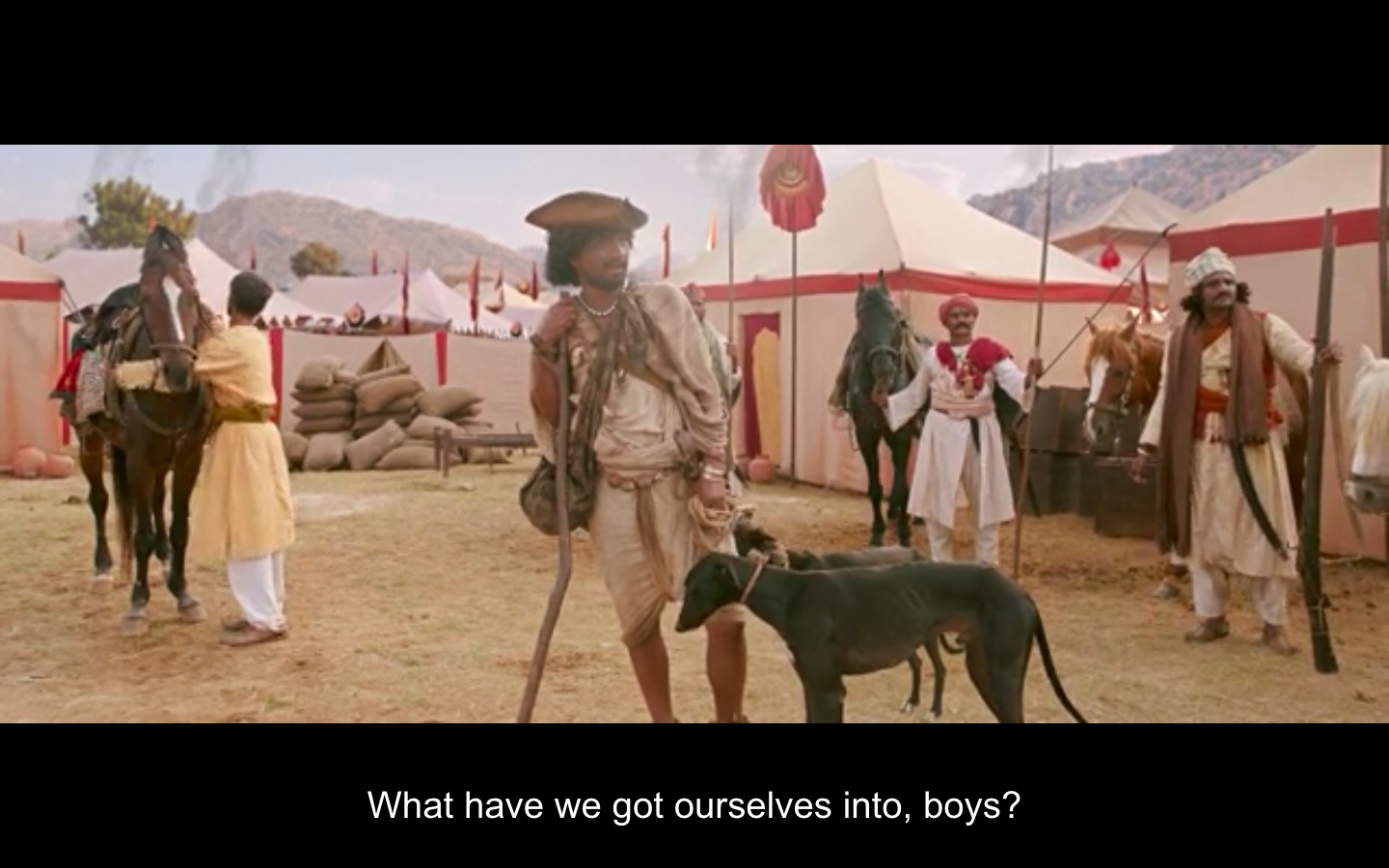 The character has no name in the film, but he finds people who are wanted for a price. That is how he makes his living. He refuses a horse mount saying it interferes with His character has many layers and he shares a special relationship with the Gossain, they respect each other. It was a treat to watch Dobriyal play this character with English hat and his greeting of:
The character has no name in the film, but he finds people who are wanted for a price. That is how he makes his living. He refuses a horse mount saying it interferes with His character has many layers and he shares a special relationship with the Gossain, they respect each other. It was a treat to watch Dobriyal play this character with English hat and his greeting of:
Howde do…

The two female characters in the film, one played by Zoya and other by Heena are in their niche. Zoya as a courtesan who is neglected, while Heena playing the wife of a chieftain carries herself well. Their characters are in emotional turmoil with maternal love and the surrounding situation.


The clothing, the artefacts are all era-appropriate and so are the languages used. A lot of work must have gone in background research and it shows in the quality of the film. Kudos to the production team for that. Just that the look of Saif has a semblance to Depp’s Jack Sparrow, that could have been avoided.
Overall a very watchable film, if you have not, do watch it.
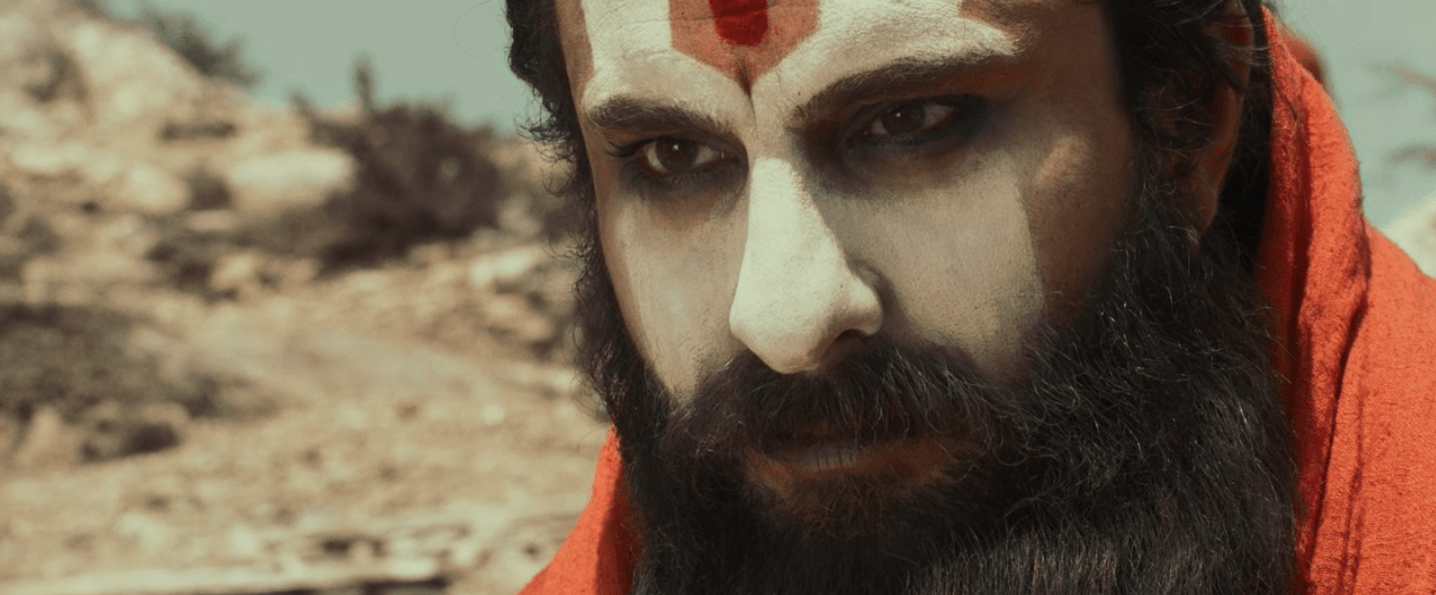
PS: A special ode to Saif Ali Khan.
In my personal opinion, Saif Ali Khan has really matured as an actor over the years and has earned my respect for it. You can’t really compare his role in Yeh Dillagi and lets say his depiction of Langda Tyagi in Omkara. It is as if you are watching two completely different actors. The variety of roles he has done in recent times, and with grace is just amazing. He has done roles which many of the mainstream actors would shy away from. Hope that we see his good form in the future also.

References
Ersatz Coffee
Recently, I was traveling by train after a long time. The train, unfortunately, got delayed and I had to have breakfast in the train. So along with the breakfast, the server asked me if I want tea of coffee. Disclaimer: Nothing like Tea, Coffee or Me .
Now, tea or coffee in a train is a tricky affair. In trains that don’t have pantries, you usually get premade tea at stations, when the vendors start selling tea yelling “Chaiiiinnn, Chaiinn, Bolo Chaiiii”, read it like in a rhyme, with almost musical notes in the background. The tea is usually overboiled, with a high dose of sugar. Very rarely you would get black tea, with whitener and sugar in sachets. People who usually like tea, milk and sugar boiled together, don’t like the dip tea and vice versa. There is an interesting episode in the history of science that involves drinking tea. The idea for analysing randomised experiments was derived from whether one lady could tell whether the tea or the milk was added first to a cup.
The lady in question (Muriel Bristol) claimed to be able to tell whether the tea or the milk was added first to a cup. Fisher proposed to give her eight cups, four of each variety, in random order. One could then ask what the probability was for her getting the specific number of cups she identified correct, but just by chance.
This tea time question was developed as an analytical tool by R. Fisher and now has become a standard in design and analysis of experiments.
Every culture and sub-culture has its own way of making tea. In Bengal, I am told, people drink black tea. This perhaps is inspired by the British who introduced tea. George Orwell has an essay on how to make a nice cup of tea. Calcutta also had a substantial Chinese population perhaps this also contributed to the tea culture there. When tea was introduced to the general population in India, about a century back, it was a marketing stratagem. This is what my grandfather had told me, he was born in 1910s. Perhaps someone can actually look at the historical records to substantiate this. They would create tea in huge cauldrons in busy market places with lots of milk and sugar. They would advertise and give “free” samples to everyone. This is how they got an entire nation addicted to tea. Also a note about why the general teacup has loads of sugar and milk, whereas the typical English way of drinking tea does not involve loads of milk and sugar, and definitely does not involve boiling milk with tea. What you usually get is the dust tea, which does not taste well without loads of milk and sugar, like your Green or Earl Grey. To make it palatable it is loaded with milk and sugar. Try to drink your favourite dust tea like an Earl Grey.
Though there are people who will drink any kind of tea, their requirement is that of tea, not it’s quality or taste. Coffee is usually worse. When it is premade in trains, it has very little coffee and too much sugar. When they give you only hot milk it is pre-boiled with sugar, and thinned to its limits. Usually, the sachet of instant coffee contains too little in terms of coffee, at least for my taste. I usually avoid coffee when it is instant or premade, ever since I started to drink coffee from ground beans. I prefer tea in such cases, as
Bad coffee is worse than no coffee.
Anyways, so here I was sitting in the train, musing about the existential question of whether I should have tea or coffee or nothing at all, I decided to go with coffee. The smart, well-dressed server from IRCTC, handed over me a paper cup and a sachet with “काफी सामग्री” written over. Eff you if you can’t read the Devanagari script. I opened the sachet which had a sugar sachet, a coffee sachet and a milk powder sachet with a wooden spoon for mixing. Then he handed over a kettle containing hot water. I overcame a major, mental block while opening the sachets and pouring the coffee into the paper cup. Then I added a little water to maintain the colour to my liking. I was tempted to drink it black, but then why not go the entire routine. So I started to add the milk powder slowly as indicated on the sachet. The colour turned from darkest brown to slighter shade of brown. And it was ready. With a lot of anticipation of a caffeine kick, I sipped the liquid and…
“Ewwww!”
was my reaction. How can anyone call this coffee? It is not coffee! I even thought of starting a viral campaign with hashtag #NOTMYCOFFEE. Instead of delight it was despair. Thoughts of WHY? Why did I ever think this would be a good idea to drink this came to my mind? Somehow I managed to finish the cup in a couple of sips. I was left with a bad taste in my mouth, which I cannot describe, and the resulting reactions in my brain cells. It was a complete disaster. Never again! I would rather go without coffee than drinking this ersatz coffee. Once you know how actual coffee tastes like, you cannot go back to this. This is the same in the case of intellectuals too, once you know what an intellectual should be like, you can immediately sense the ersatz ones and you won’t like them just like the ersatz coffee.
Never again shall I drink this ersatz coffee.
I like my coffee as it is supposed to be. People become emosional on the account of coffee. For example, read this excellentest account of a French man from 1800s.
Edit 1: On the return journey, I actually tried something else. I had kept my South Indian style drip filter accessible with the coffee powder. Now, since the hot water is available in the form of flasks, I actually made hot decoction in the running train. But no hot milk was available, only milk powder, I had only the black coffee. It was definitely better than the ersatz coffee. Though the water I used for brewing could have been hotter.
On respect in the classroom
If you are a teacher (of any sort) and teach young people, don’t be disheartened if the students in your class don’t respect you or listen to you or maintain discipline. Even great philosophers like Socrates and Aristotle has a tough time dealing with their students
Socrates grumbled that he don’t get no respect: his pupils “fail to rise when their elders enter the room. They chatter before company, gobble up dainties at the table, and tyrannize over their teachers.” Aristotle was similarly pissed off by his students’ attitude: “They regard themselves as omniscient and are positive in their assertions; this is, in fact, the reason for their carrying everything too far.”Their jokes left the philosopher unamused: “They are fond of laughter and consequently facetious, facetiousness being disciplined insolence.”
– Judith Harris The Nurture Assumption
That being said, the students are also very perceptive about the knowledge of the teachers, and know who is trying to be a cosmetic intellectual.


